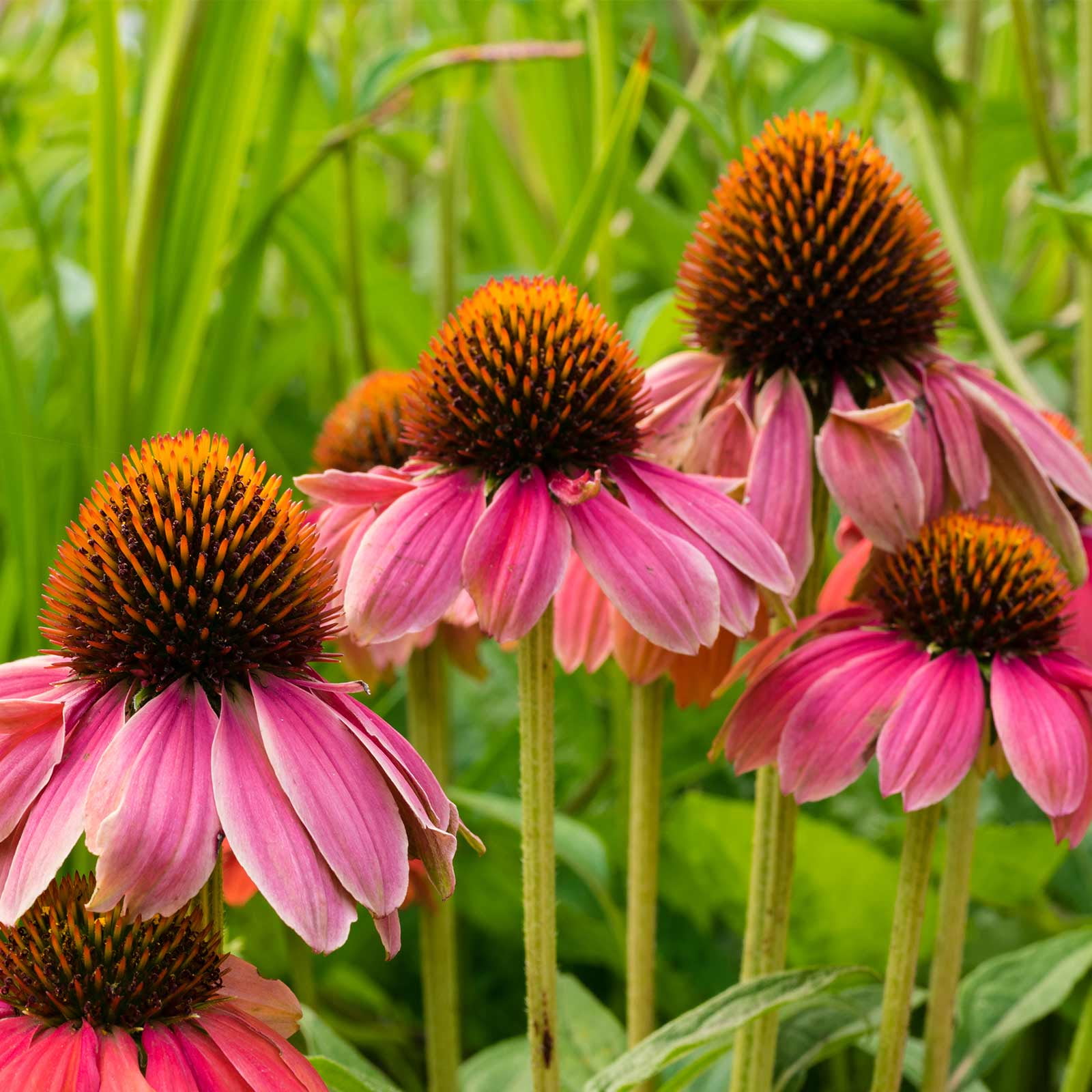

When this happens, cut the plant back by 1/3. Pruning ConeflowersĪlthough deadheading is not a requirement when it comes to growing echinacea, the plant can begin to look a bit tired or ragged in late summer. You may need to give the plant some protection in the first winter in your garden, but after this, they are tough and rugged.īe sure to check out my list of other cold hardy perennial plants here. The majority of varieties are cold hardy in zones 3-8, which means they can be grown in most areas of the USA. Cold HardinessĮven though purple coneflowers (and other varieties) are drought tolerant, they are also quite cold tolerant. If the infestation is not too large, just knock the beetles off into a bucket of soapy water. The coneflower is relatively easy to care and not bothered too much by diseases, but can sometimes be affected by powdery mildew, gray mold, leaf miners or vine weevils. Fungus diseases can usually be managed by growing the plants where they receive good ventilation.Ĭoneflowers are also a favorite plant for Japanese beetles. This can result in the plant having very lush green foliage but not many flowers. If your area receives less than this, you will need to add water to the plant.Īlthough coneflowers like a bit of organic matter at planting time, be careful of adding too much. Even though it can tolerate dry conditions, it still likes to get about an inch of rain each week.

It will tolerate poor soil quite well, though. The coneflower plant is quite drought-tolerant but likes well draining fertile soil. Moisture and Soil requirements for Coneflowers
PURPLE CONEFLOWER SEEDLING FULL
The plant will tolerate light shade but does best in full sun since those grown in shadier spots will “reach” for the sun. Grow coneflowers in full sunlight so that the plant gets at least 5 hours of sunlight a day.
PURPLE CONEFLOWER SEEDLING HOW TO
Here are some tips that will show how to care for purple coneflowers. With minimal care, this robust perennial will give you years of showy flowers. Deadheading during the flowering cycle will also extend bloom time but is not necessary. Removing the flower stalks as the plant sets seed will prolong the flowering cycle. The flowers are daisy like in appearance and can be quite large (some as large as 6 inches in diameter.) The plant rarely needs staking in spite of the tall flower stalks. Each flower head will remain in bloom for several weeks.

The cone shaped flowers sit above the plant on 2-5 foot tall flower stalks. Purple coneflower plants will bloom in the summer of their second year and then each year after that. One version has such a large raised center that it is known as a “ sombrero Mexican hat coneflower!” Echinacea flowers The petals also come in double and single layers and the center of the flower can vary to a large degree, depending on variety. They also come in yellow and the modern hybrids have a large range of colors. The name is a bit of a misnomer, since not every echinacea will have purple flowers. The most commonly grown variety of this sturdy plant are the purple coneflowers, also known by their botanical name echinacea purpurea. Some of the dwarf varieties will grow to only about a foot and a half. Most purple coneflowers will grow to 2-4 feet tall and about 18-24 inches wide. The size of the plant and depends of the type that you grow, as well as your growing conditions. They can really take temperatures that would make other plants shrivel and die!Ĭoneflowers are perennials which means that, once established, the plant will return year after year. The coneflower plant is drought tolerant and is a great perennial if you live in an area that has high heat. The plant blooms in the middle of the summer, but the dried flowers also have fall and winter interest for birds long after the bloom time. The center of the plant is where the seeds of the plant lie and it is very attractive to bees, butterflies and birds. They sit on tall stems and have a raised center area surrounded by petals. If you are looking for a plant that will draw butterflies and birds to your garden, the perennial coneflower us a great choice.Įchinacea flowers are attractive and rugged. The purple coneflower is native to the South Eastern United States.


 0 kommentar(er)
0 kommentar(er)
